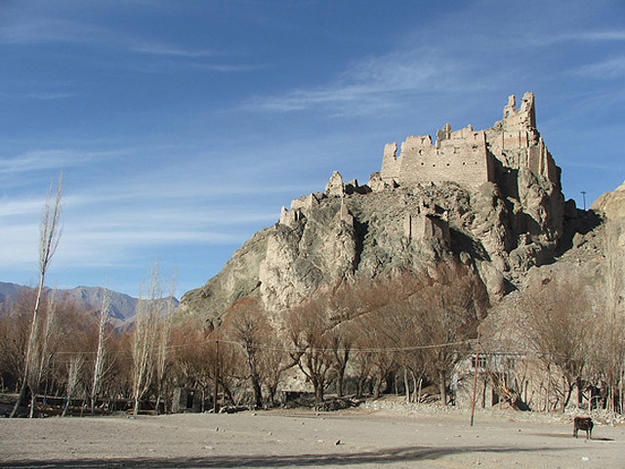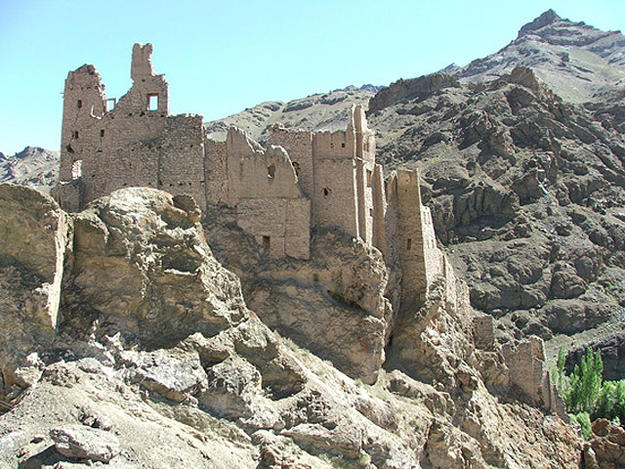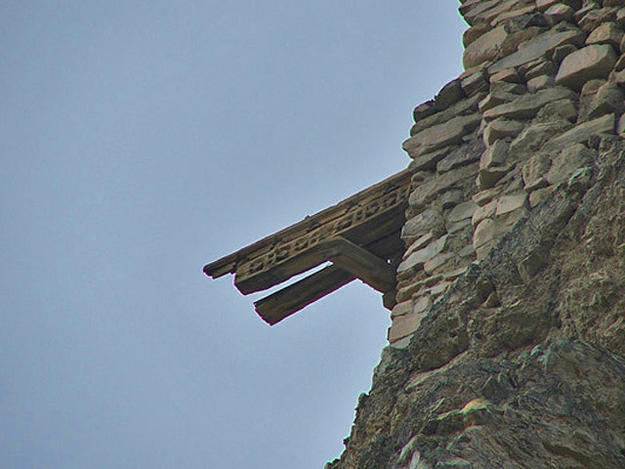Chiktan Castle
2010 World Monuments Watch
Deep within the remote, mountainous region of northern India, Chiktan Castle erupts from the mountainside, seemingly born out of the cliff upon which it stands. Built in the 16th century by Balti craftsmen, the castle served as a royal residence for centuries despite shifts in rulers as the region was amalgamated with neighboring kingdoms. Chiktan Castle is composed of rammed earth and stone masonry with mud mortar. Following the designs of architect and carpenter Shinkhen Chandan, the castle used timber to support the ceilings of the structure as well as to frame the doors and windows. Prepared for impending attacks, Chiktan Castle was a symbol of unity, strength, and community for the peoples of the region. The castle was attacked several times during its history, but was not abandoned until the late 19th century. Neglect and natural elements have left the castle in an advanced state of decay. Large portions of the outer walls have collapsed, partially due to the removal of stone in the mid 20th century for a local government hospital. As the capital of the Chiktan region, the castle was a significant political center and military fortification, and remains an important symbol of shared history and culture in the region.



